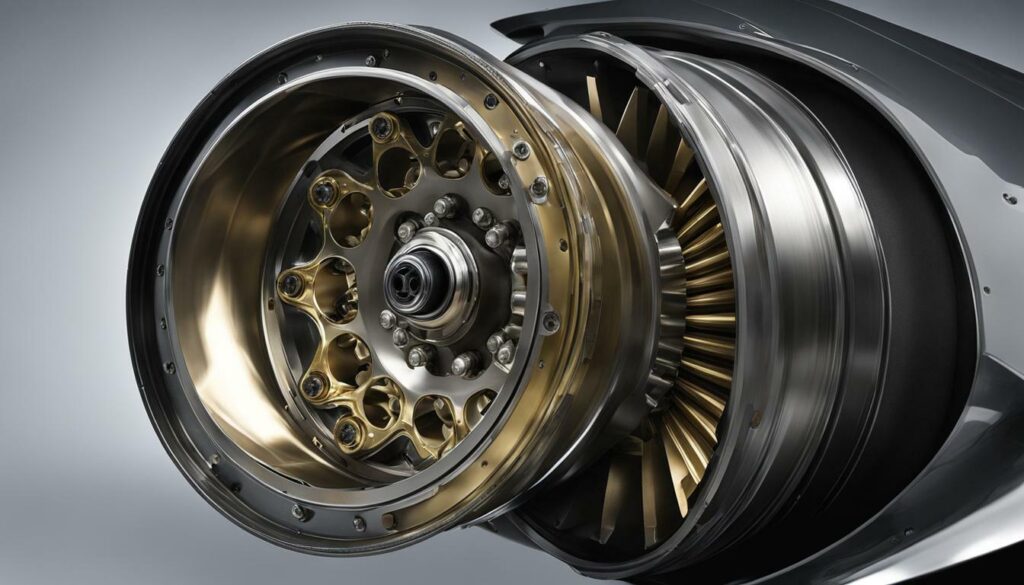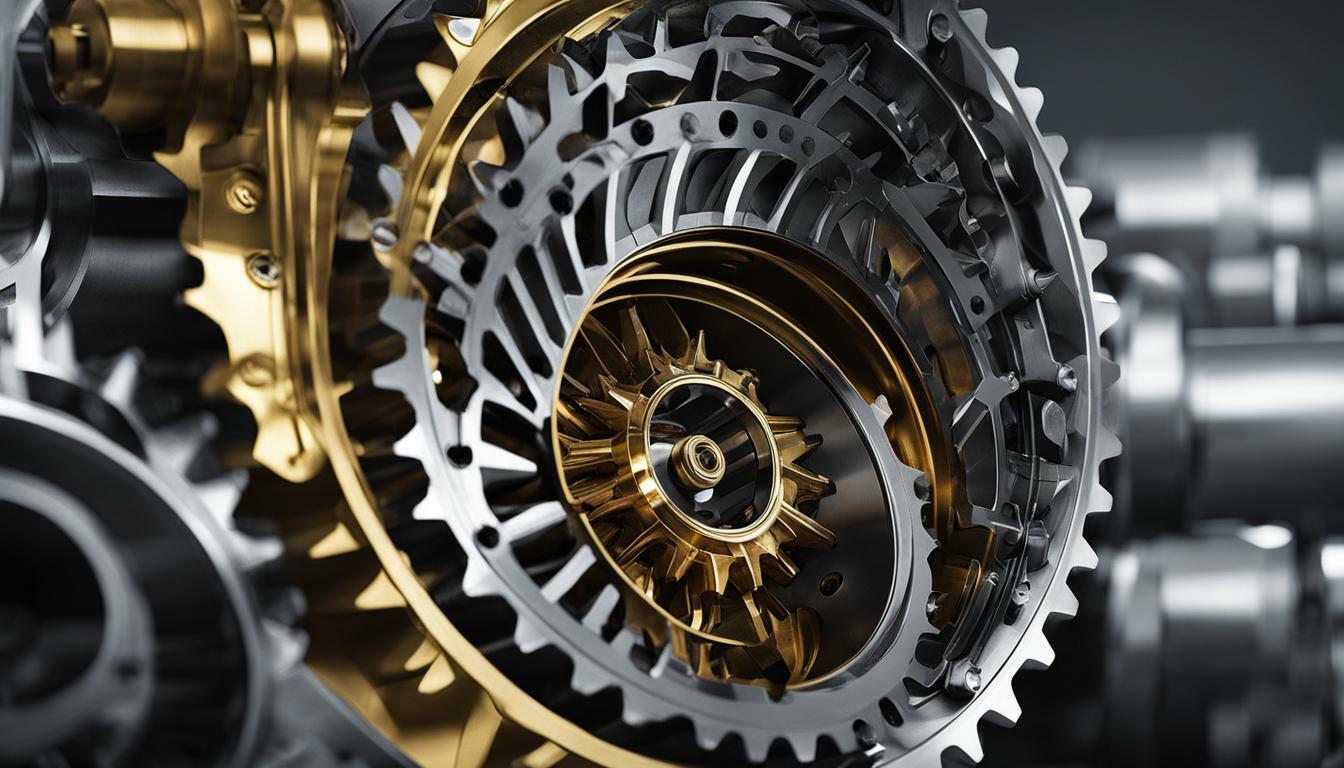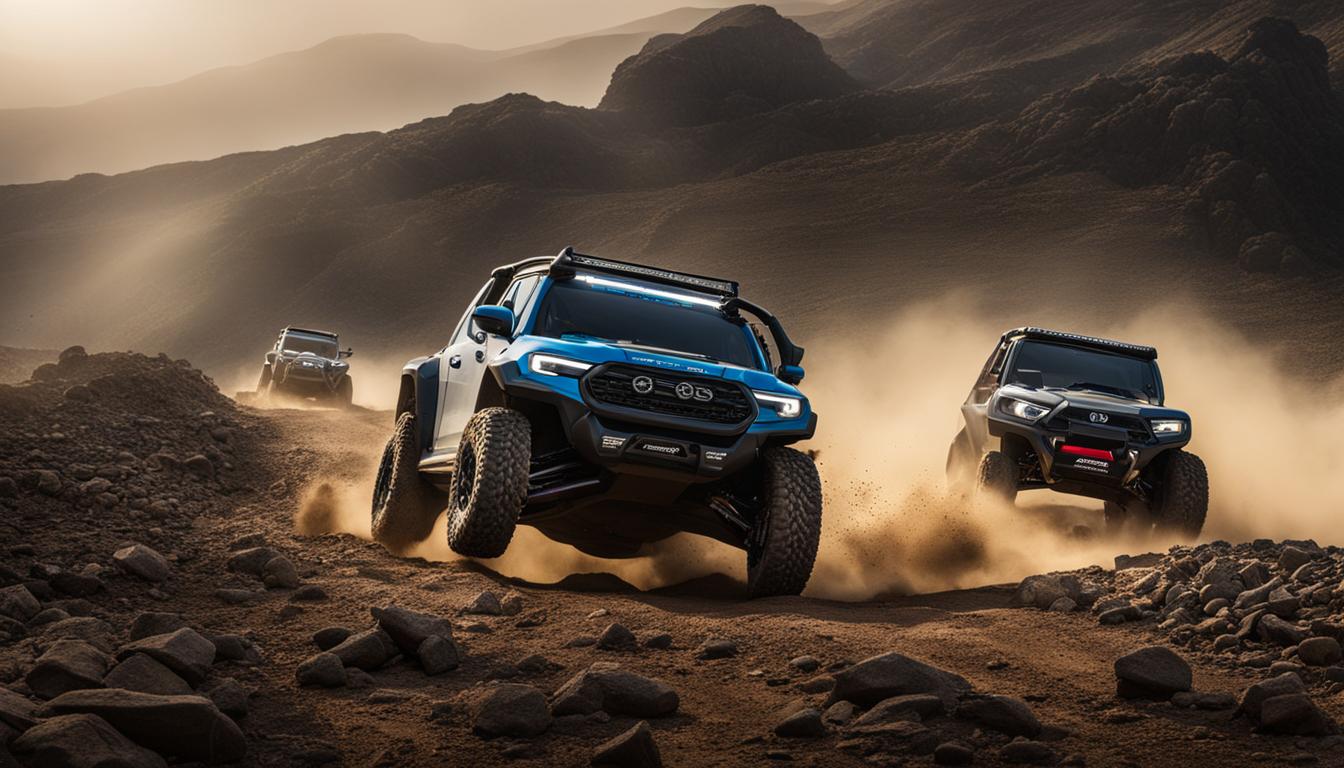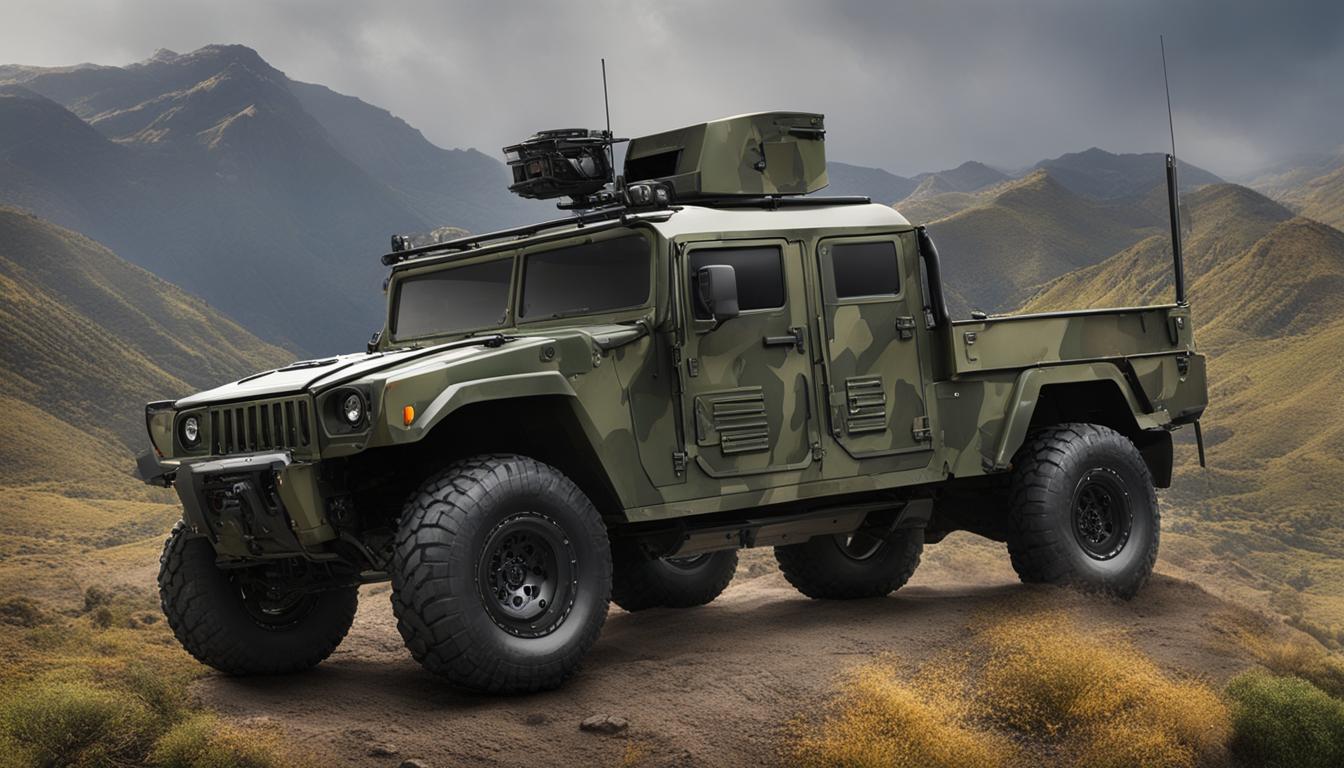The differential is a crucial component of the drivetrain system, and understanding the difference between open, locked, and limited-slip differentials can help you make informed decisions about your vehicle and enhance your driving experience.
Open differentials are the most common type found in vehicles, allowing the wheels to rotate at different speeds when turning. However, they may struggle to transfer power effectively to the wheel with better traction, resulting in wheel spin on slippery surfaces.
Limited-slip differentials, on the other hand, function like open differentials during normal driving but have the ability to transfer power from the spinning wheel to the wheel with high traction. This helps maintain better control and traction in various driving conditions.
Locked differentials lock both axle shafts together, forcing both wheels to rotate at the same speed. While this ensures equal distribution of driveline torque, it can negatively impact handling and is not suitable for all driving conditions.
Key Takeaways:
- Open differentials allow wheels to rotate at different speeds, but may struggle to transfer power effectively on low-traction surfaces.
- Limited-slip differentials transfer power to the wheel with high traction, maintaining better control in various driving conditions.
- Locked differentials lock both wheels together, ensuring equal distribution of torque but potentially impacting handling.
- The choice of differential depends on driving conditions and personal preferences.
- Understanding the differences between differentials can help you choose the right one for your vehicle and improve your driving experience.
Exploring Open Differentials
Open differentials are the most common type of differential found in vehicles, and they play a vital role in allowing the wheels to rotate at different speeds when turning. This mechanism ensures smooth progress and prevents tire scrubbing, reducing wear and tear on the tires and improving overall vehicle performance. Open differentials operate by allowing the wheels on the same axle to rotate independently, distributing torque evenly between the two wheels.
One of the key features of open differentials is their ability to provide a seamless transition between different speeds, allowing the vehicle to navigate corners smoothly. When a vehicle turns, the inside wheel travels a shorter distance than the outside wheel. The open differential allows the wheels to rotate at different speeds, compensating for this difference and ensuring that the vehicle maintains stability and control.
However, open differentials have limitations. When one wheel loses traction, such as on slippery or icy surfaces, the torque is directed to the wheel with the least resistance. As a result, the wheel with poor traction may spin while the other remains stationary, reducing the vehicle’s ability to move forward. This is known as “one-wheel drive” and can be a disadvantage in challenging driving conditions.

| Differential Type | Advantages | Limitations |
|---|---|---|
| Open Differentials | – Smooth operation during normal driving conditions – Allows independent wheel rotation |
– Limited traction on slippery surfaces – One-wheel drive in certain situations |
| Limited-Slip Differentials | – Improved traction – Transfers power between wheels with different traction levels |
– Not suitable for extreme off-road conditions |
| Locking Differentials | – Maximum torque distribution – Enhanced off-road capabilities |
– Adverse effects on handling – Not ideal for on-road driving |
Understanding Limited-Slip Differentials
Limited-slip differentials function similarly to open differentials during normal driving but possess the capability to transfer torque from one wheel to another, enhancing traction and performance. They achieve this through the use of a mechanism that automatically distributes power between the wheels based on their traction levels.
One key feature of limited-slip differentials is the use of a bias ratio, which determines the amount of torque that is transferred. This ratio can be adjusted to suit different driving conditions and driver preferences. It allows the limited-slip differential to provide a balance between improving traction and ensuring smooth handling.
Unlike locked differentials that force both wheels to rotate at the same speed, limited-slip differentials allow some differentiation in wheel speed while still transferring power. This makes them suitable for a wide range of driving conditions, including everyday street driving, off-roading, and performance driving.
| Differential Type | Advantages | Limitations |
|---|---|---|
| Open Differentials | – Smooth turning and handling – Simple and cost-effective |
– Limited power transfer in low-traction situations – One wheel can spin freely |
| Limited-Slip Differentials | – Improved traction and performance – Balanced torque distribution |
– Slight speed differentiation between wheels – Limited effectiveness in extreme off-road conditions |
| Locked Differentials | – Maximum power transfer to both wheels – Improved traction in extreme off-road conditions |
– Can negatively impact handling on paved surfaces – Not suitable for everyday driving |
When considering a limited-slip differential, it is important to determine the driving conditions and performance requirements. Limited-slip differentials provide a good balance between everyday driving comfort and improved traction, making them a popular choice for many drivers.

In Summary
- Limited-slip differentials function similarly to open differentials but can transfer torque between wheels for better traction and performance.
- They use a bias ratio to determine the amount of torque transferred.
- Limited-slip differentials allow some differentiation in wheel speed while transferring power, making them suitable for various driving conditions.
- Choosing the right differential depends on the specific driving conditions and preferences of the individual.
References:
- “Differential (mechanical device).” Wikipedia.
- “Limited Slip Differential.” CarBikeTech.
Examining Locked Differentials
Locked differentials differ from open and limited-slip differentials as they lock both axle shafts together, ensuring equal torque distribution to both wheels. This guarantees maximum traction and power delivery, making locked differentials popular among off-road enthusiasts and in extreme driving conditions.
When locked, the wheels on both sides of the axle rotate at the same speed, regardless of the surface conditions or traction available. This eliminates the chance of one wheel spinning while the other remains stationary, providing superior grip and maneuverability.
However, it’s important to note that locked differentials can have some drawbacks. Since both wheels are forced to rotate at the same speed, handling can become more challenging, particularly on paved roads and during turns. This can cause increased tire wear and potential driveline stress.
Understanding the Implications
Locked differentials are highly beneficial in situations where maximum traction is required, such as rock crawling or deep mud driving. They provide excellent power distribution to both wheels, ensuring better control and increased likelihood of overcoming obstacles. Additionally, locked differentials offer improved performance in situations where differential slippage may be detrimental, such as icy or snowy conditions.
However, it’s crucial to consider the driving conditions and personal preferences before opting for a locked differential. For daily driving on paved roads or in situations where handling and maneuverability are priorities, open or limited-slip differentials may be more suitable. Making an informed decision based on the specific requirements will result in a better driving experience overall.
| Differential Types | Differential Explained | Differential Function | Differential Mechanism | Differential Operation | Differential Features |
|---|---|---|---|---|---|
| Open Differentails | Allow wheels to rotate at different speeds | Ensure smooth progress when turning | Basic differential system found in most vehicles | Rotate independently when one wheel loses traction | Not capable of transferring power effectively |
| Limited-Slip Differentails | Function as open differentials during normal driving | Transfer power from spinning wheel to wheel with high traction | Use a bias ratio to determine torque transfer | Work at all vehicle speeds | Suitable for most driving conditions |
| Locked Differentails | Lock both axle shafts together | Ensure equal torque distribution to both wheels | Maximize traction and power delivery | Beneficial in extreme driving conditions | Challenging handling on paved roads |
Locked differentials are a powerful tool for off-road enthusiasts and those facing challenging driving conditions. By locking both axle shafts together, these differentials ensure equal torque distribution to both wheels, providing maximum traction and maneuverability. However, they may not be suitable for everyday, paved road driving due to handling challenges. It’s important to understand the implications and choose the right type of differential based on specific needs and preferences.

Conclusion
Understanding the difference between open, locked, and limited-slip differentials is essential in optimizing your vehicle’s performance and ensuring a smooth driving experience. The differential is a crucial component of the drivetrain system that allows each wheel to turn at different speeds, improving maneuverability and traction.
Open differentials, the most common type, enable wheels to rotate at different speeds during turns, ensuring seamless progress. However, they may lead to wheel spin on low-friction surfaces since they do not effectively transfer power to the wheel with better traction.
On the other hand, limited-slip differentials function similarly to open differentials during regular driving but have the ability to transfer power from the spinning wheel to the wheel with high traction. This is achieved through a bias ratio, which determines the amount of torque transferred. Limited-slip differentials are suitable for most driving conditions, regardless of vehicle speed.
Locked differentials, as the name suggests, lock both axle shafts together, forcing both wheels to rotate at the same speed. This ensures equal distribution of driveline torque to both wheels. However, they can negatively impact handling and may not be suitable for all driving conditions.
Ultimately, the choice between different differential types depends on the specific driving conditions and personal preferences. Open differentials are versatile and found in most vehicles, while limited-slip differentials offer enhanced traction and performance. Locked differentials excel in extreme off-road situations but may compromise handling on regular roads. By understanding the characteristics and functionalities of each differential type, you can make an informed decision to optimize your vehicle’s performance and enjoy a smooth driving experience.
FAQ
What is a differential?
A differential is an important part of the drivetrain system that allows each wheel to turn at different speeds.
What are the main types of differentials?
The three main types of differentials are open differentials, limited-slip differentials, and locking differentials.
How does an open differential work?
An open differential allows the wheels to rotate at different speeds when turning, ensuring smooth progress. However, it doesn’t effectively transfer power to the wheel with better traction, meaning one wheel may spin while the other remains stationary on low-friction surfaces.
How does a limited-slip differential work?
A limited-slip differential functions as an open differential during normal driving but has the ability to transfer power from the spinning wheel to the wheel with high traction. It uses a bias ratio to determine how much torque is transferred. Limited-slip differentials work at all vehicle speeds and are suitable for most driving conditions.
How does a locking differential work?
A locking differential locks both axle shafts together, forcing both wheels to rotate at the same speed. This guarantees that driveline torque is distributed equally to both wheels. However, locking differentials can have negative effects on handling and are not suitable for all driving conditions.
Which type of differential should I choose?
The choice of differential depends on the specific driving conditions and personal preferences. Open differentials are suitable for most vehicles, limited-slip differentials offer improved traction, and locking differentials are best for off-road situations or extreme traction needs.
Source Links
- https://auburngeardiffs.com/what-differential-do-i-need-understanding-limited-slip-vs-open-vs-locking-differentials/
- https://www.rrtransmissions.com/technical/open-locked-differentials
- https://www.streetmusclemag.com/tech-stories/drivetrain/locking-versus-limited-slip-we-look-at-four-eaton-differentials/
 Skip to main content
Skip to main content


